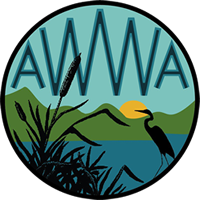Depending on the source you look at, “eutrophication” refers to the process by which a body of water acquires a high concentration of nutrients, especially phosphates and nitrates (Art, 1993). Typically, when a water body undergoes eutrophication, it promotes excessive algae growth.
 A cyanobacteria (algae) bloom in Province Lake, 2012.
A cyanobacteria (algae) bloom in Province Lake, 2012.
The eutrophication of a water body can occur through natural and/or artificial nutrient sources. Natural sources include stormwater runoff, atmospheric deposition, and/or the export of nutrients from wetlands. Artificial sources include fertilizers, septic tanks, and/or industrial processes.
 Stream bank erosion. The deposition of sediments into water bodies increases the concentration of nutrients in the water body.
Stream bank erosion. The deposition of sediments into water bodies increases the concentration of nutrients in the water body.
Lakes undergo natural aging that move them from nutrient poor (oligotrophic) to nutrient rich (eutrophic) over the course of several centuries depending on the area. This process can take as little as a decade or two if lakes are put under additional stresses from urban runoff and population growth. Eutrophic water bodies tend to hold less value and are less used for recreation that pristine, oligotrophic lakes.

